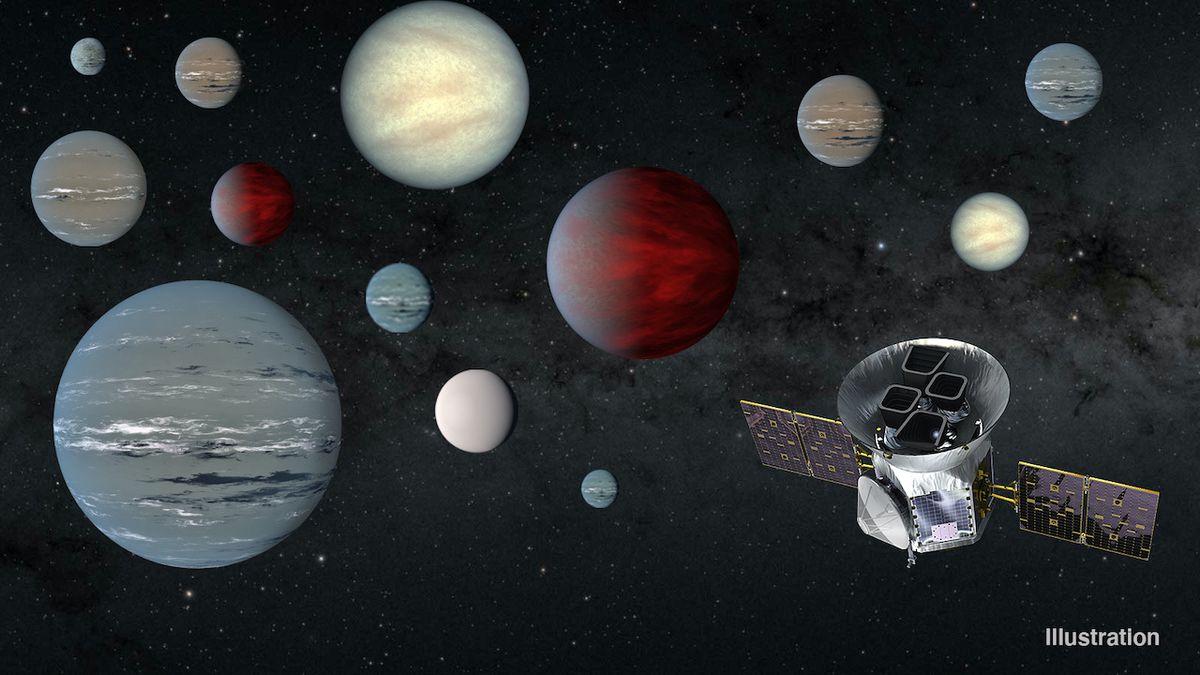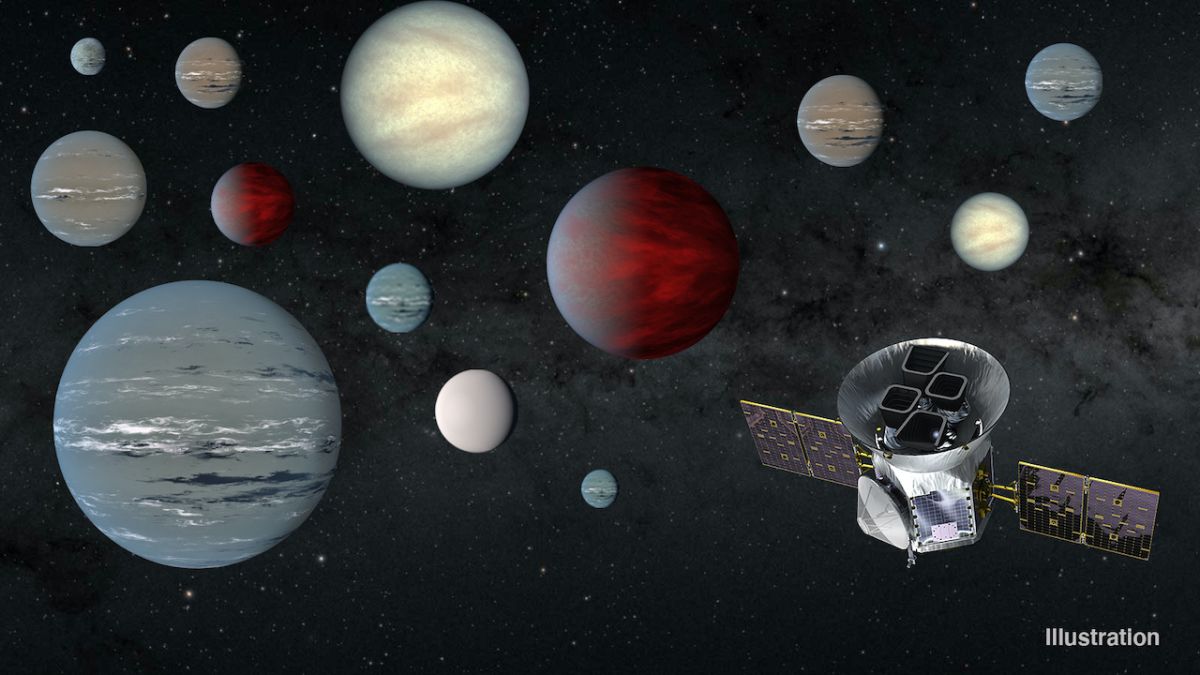
A NASA spacecraft built to spot alien worlds has completed its first two years of work, and the tally is in: the mission hauled in 2,241 new exoplanet candidates for scientists to study.
The Transiting Exoplanet Survey Satellite (TESS) launched in April 2018, designed to spend two years poring over most of the sky. Each month, the spacecraft turns to a new strip of stars and stares, watching for the characteristic dips in brightness caused by a planet crossing between star and telescope. In a new catalog, astronomers offer a detailed view of a host of planet candidates the spacecraft identified in its first two years of work.
“The exciting thing is to look at the map of TESS exoplanets as a kind of to-do list — with 2,000 things on it,” Natalia Guerrero, a researcher at the Massachusetts Institute of Technology and the paper’s lead author, said in a NASA statement.
Related: NASA’s planet-hunting TESS spacecraft snaps spectacular panorama of the Milky Way
To produce the new catalog, dozens of scientists pored through TESS observations of more than 16,000 targets to winnow out planet candidates from other types of phenomena, finding 2,241 potential alien worlds.
The researchers also ran initial tests evaluating those candidate planets, catching more than 500 other phenomena masquerading as alien worlds — sometimes a phenomenon in space, sometimes a quirk produced by the spacecraft’s activities. (The astronomers write that scientists will probably find more such false positives as they analyze the candidates in more detail.)
The first step for each so-called “object of interest” will be confirming that the observations truly represent a planet, a process called confirming the planet. Confirming an exoplanet candidate requires measuring both the size and mass of an object to be sure it’s really a planet causing the blip, rather than some other phenomenon. Scientists have confirmed only 120 of the candidates described in the TESS catalog to date, according to the NASA statement, because the process requires instruments that are always quite busy.
That reality means that the catalog, for as much as it is a body of work in itself, also represents a buffet of future scientific investigations. “It’s an incredible body of work — a rich stockpile of exoplanet candidates for the community to mine and explore for years to come,” Jessie Christiansen, a research scientist at NASA’s Exoplanet Science Institute and a co-author of the study, said in the same statement.
Of all those possible new planets, a few stand out, of course — including finds that represent firsts for the mission. Pi Mensae c, for example, a sub-Neptune that may host a thick atmosphere, was the TESS mission’s first discovery. TOI 700 d is the first planet TESS identified that may be about the size of Earth and orbiting in the habitable zone of its star.
Related: An Earth-size planet in the habitable zone? New NASA discovery is one special world.
Other finds are intriguing in their own right. DS Tuc A b is nearly six times the size of Earth and may be just 45 million years old. LHS 3844 b makes a full circuit of its star in just 11 hours, although it’s likely to be just a bare rock. TOI 1690 b may orbit a white dwarf, the dense core of a star that has lost most of its light elements.
TESS is still observing; NASA extended the mission for another two-year stint, which will keep the spacecraft in business until September 2022. And scientists will be working with the existing data, including the new catalog, for years to come.
“Now the community’s role is to connect the dots,” Guerrero said. “It’s really cool because the field is so young, there’s still a lot of room for discovery: those ‘Aha’ moments.”
The catalog is described in a paper uploaded to the preprint server arXiv.org on March 23.
Email Meghan Bartels at mbartels@space.com or follow her on Twitter @meghanbartels. Follow us on Twitter @Spacedotcom and on Facebook.



